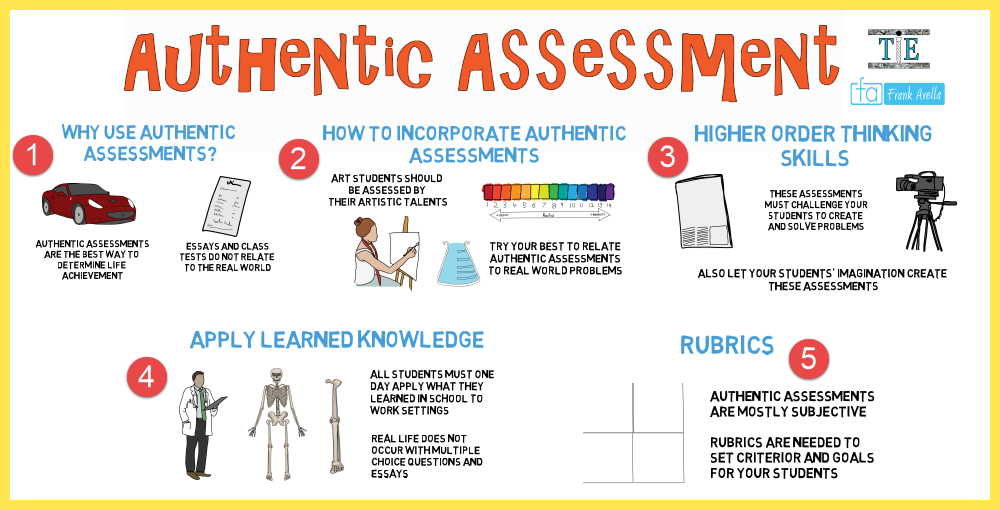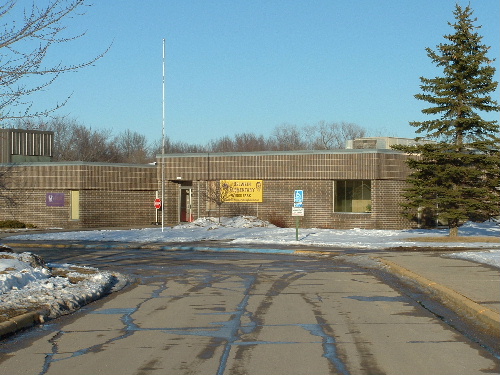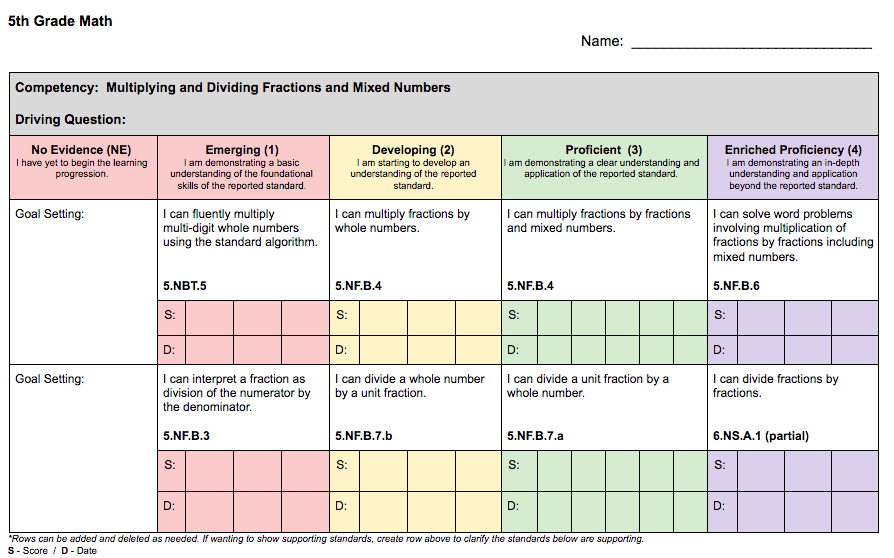Assessment is an important element in the learning process. Assessments show students’ progress, identifies strengths and weaknesses, and gives the instructor an idea on how to best adjust instruction. There are two main types of assessments, formative (I like to refer to these as proficiency checks) and summative assessments. Formative assessments are given throughout the learning process. They are used to adjust instruction in real-time. They allow teachers to differentiate instruction to student needs. Summative assessments are administered at the end of the learning process to gauge learning. Authentic assessments must be student-centered and focused on learning goals, criteria and

Authentic Assessment Vs. Traditional Assessments:
Authentic assessments differ from traditional paper and pencil assessments. They break the traditional paradigm of low-level multiple-choice assessments and assessments designed to measure the student’s ability to memorize material. Authentic assessments are described as learning tasks that require students to create something real with their learning. Students are learning (or showing their learning) by doing. Authentic assessment is the idea of using creative learning experiences to test students’ skills and knowledge in realistic situations.
There are two ways of designing authentic assessments. First, designing assessments that students engage in actual situations in their “field of study”. Second, creating assessments that mimic real-world applications such as scenarios of real-life problems or case studies. Authentic assessments should be scaffolded throughout the learning process allowing for immediate, real-time feedback.
Criteria For Authentic Assessment:
- It’s realistic
- Requires judgment and motivation
- Asks students to “do” something to prove learning
- Replicates or simulates “real world” applications
- Assesses students’ abilities to negotiate complex tasks
- Allows opportunities to practice and get feedback so they can adjust their performance
Authentic Assessment Example:

Project-Based Learning & Gamification Mesh
I have used a mix of gamification and project-based learning (PBL) as a form of engaging my students through the learning process. Minecraft Education Edition was used as the gamification piece and students worked with the school architects, real blueprints, and designed a real model to scale of our middle school to help acclimate younger students to their new surroundings.
Problem: There are actually two different scenarios that we used our gamification/PBL mesh project for. First, our 4th-grade students move from the elementary building to the middle school building when entering 5th grade. In an average year, the 4th-grade students would have the opportunity to tour their new building at the end of their school year. One year, however, the middle school building was closed for construction so a tour wasn’t possible. Second, it wasn’t possible in the 2020-2021 school year due to COVID. Our students were in person but kept in pods to keep the students safe.

Solution: Our 5th and 6th grade students used Minecraft EDU to work together to design a digital representation of the middle school building. They worked with the architects and learned how to read blueprints to ensure they would have the proper dimensions and locations of the new construction. They then split up the different wings of the school building. Each group worked together to build their wing. One group worked on mapping out where each subject area and teacher’s rooms were located. They then mapped out each classroom with designs on placements of desks, wall hangings and visuals. Classrooms were built to scale with details to match. Another group of students was tasked with recording teachers greeting students, summarizing what they teach and welcoming them to their classroom. This was built into the teacher avatars. When students entered each classroom, the teacher avatar met them at the door with their greeting and classroom information. After the building was complete, each 4th-grade student joined the Minecraft EDU. Their avatars partnered up with a student or groups of students’ avatars from 5th and 6th grade who acted as their tour guide.
Authentic Assessment: The students were assessed on the Universal Constructs including communication, collaboration, productivity and accountability, critical thinking and flexibility and adaptability throughout the project. Formative assessments for the Universal Constructs consisted of student self-checks and instructor observations. Students also rated each other on teamwork and collaboration. Also after each building session the students completed a quick write summary of what they accomplished, what they still needed to do and items needing to be tweaked or reworked. They also included a reflection of how they felt about their productivity for the day and what skills they needed help with. The summative or final authentic assessment consisted of the final product that was used with the 4th grade students.
Standards: This project was STEM (science, technology, engineering and math) focused. Students used area and perimeter, measurement, coding.

3-5 PS-ETS1-1 Design a simple problem reflecting a need or want that includes specified criteria for success and constraints on materials, time or cost.
MP.4 Model with mathematics.
MP.7 Look for an make use of structure.
MP.8 Look for and express regularity in repeated reasoning.
5.NF.5 Interpret multiplication as scaling (resizing)
W.5.4 Produce clear and coherent writing in which the development and organization are appropriate to task.
W.5.10 Write routinely over extended time frames and shorter time frames.
SL.5.1 Engage effectively in a range of collaborative discussions with diverse partners.
SL.5.5 Include multimedia components and visual displays in presentations when appropriate to task and situations.
Check out my blog post about how we used Minecraft In The Classroom
References:
Authentic Assessment in the Online Classroom – Center for Teaching and Learning | Wiley Education Services. (2021). Retrieved 29 May 2021, from https://ctl.wiley.com/authentic-assessment-in-the-online-classroom/
Authentic Assessment. (2021). Retrieved 29 May 2021, from https://citl.indiana.edu/teaching-resources/assessing-student-learning/authentic-assessment/index.html